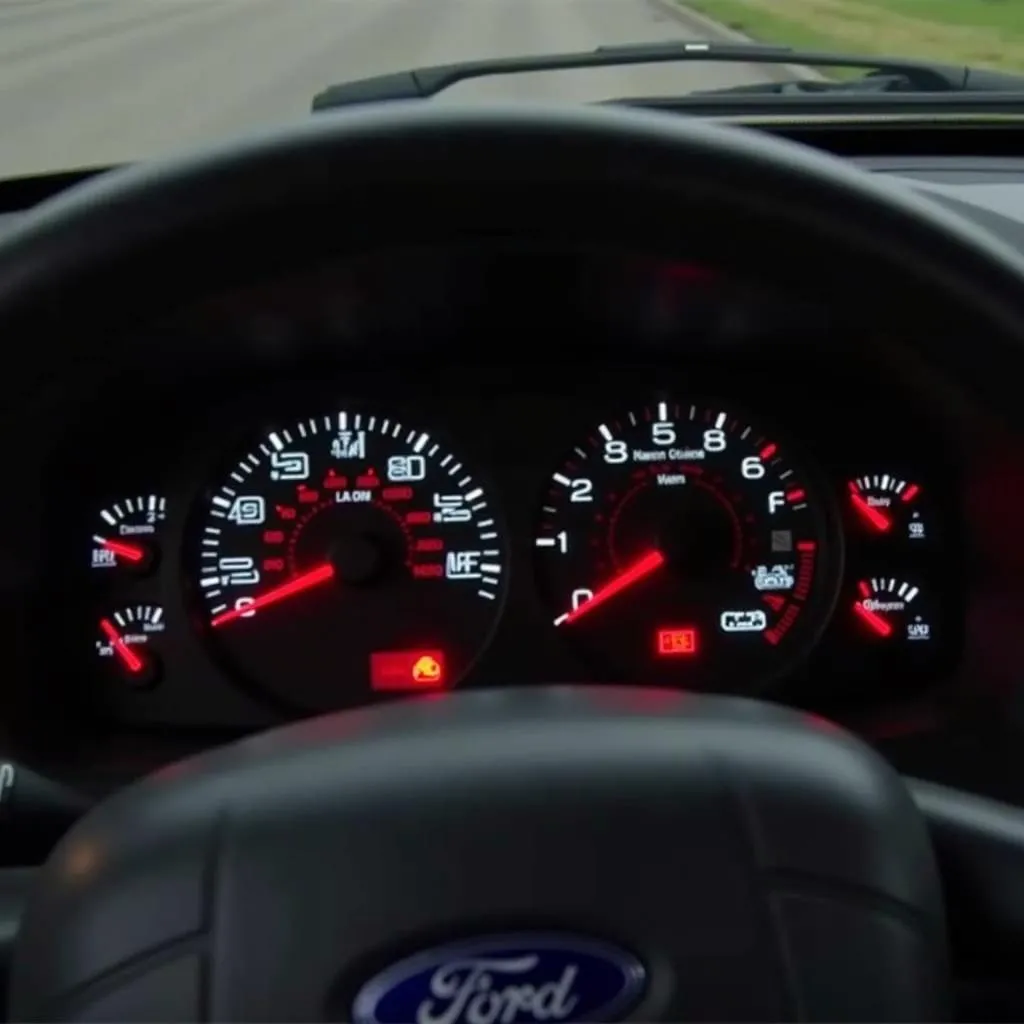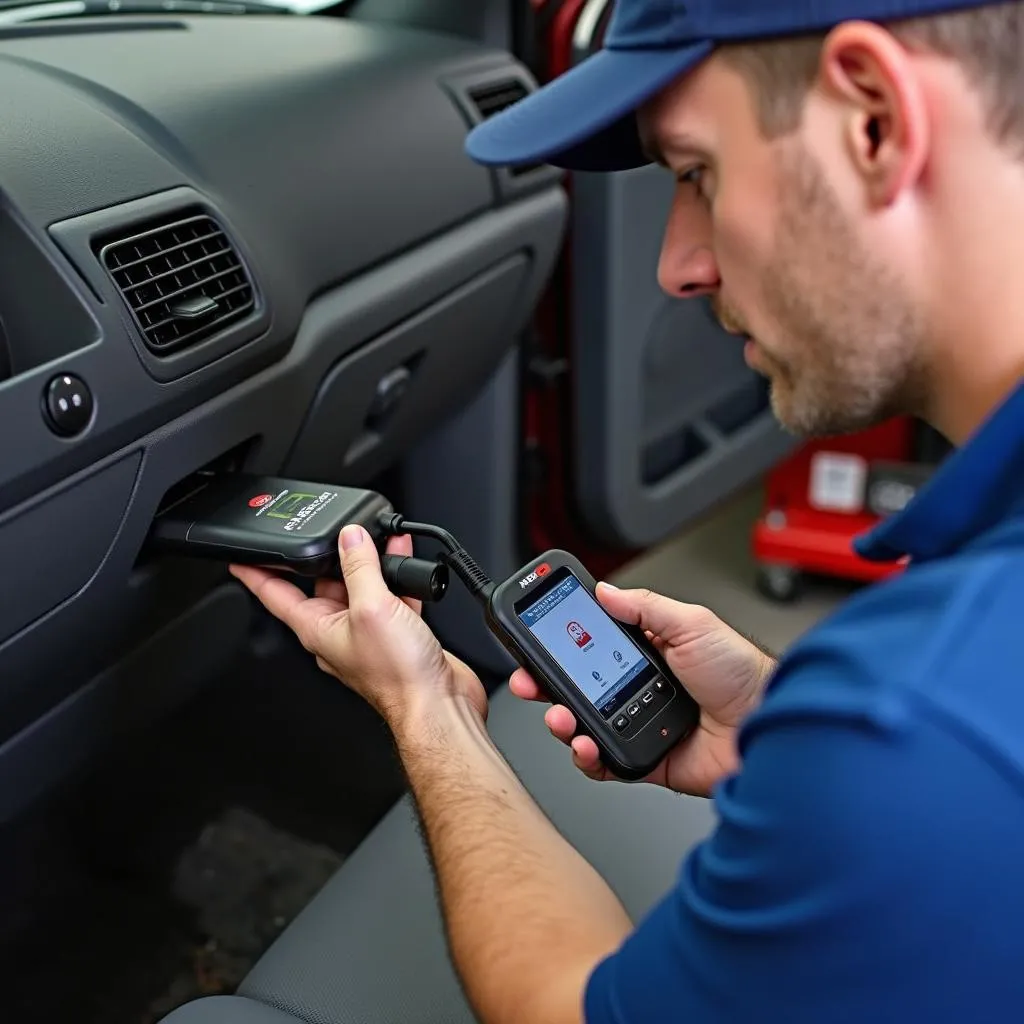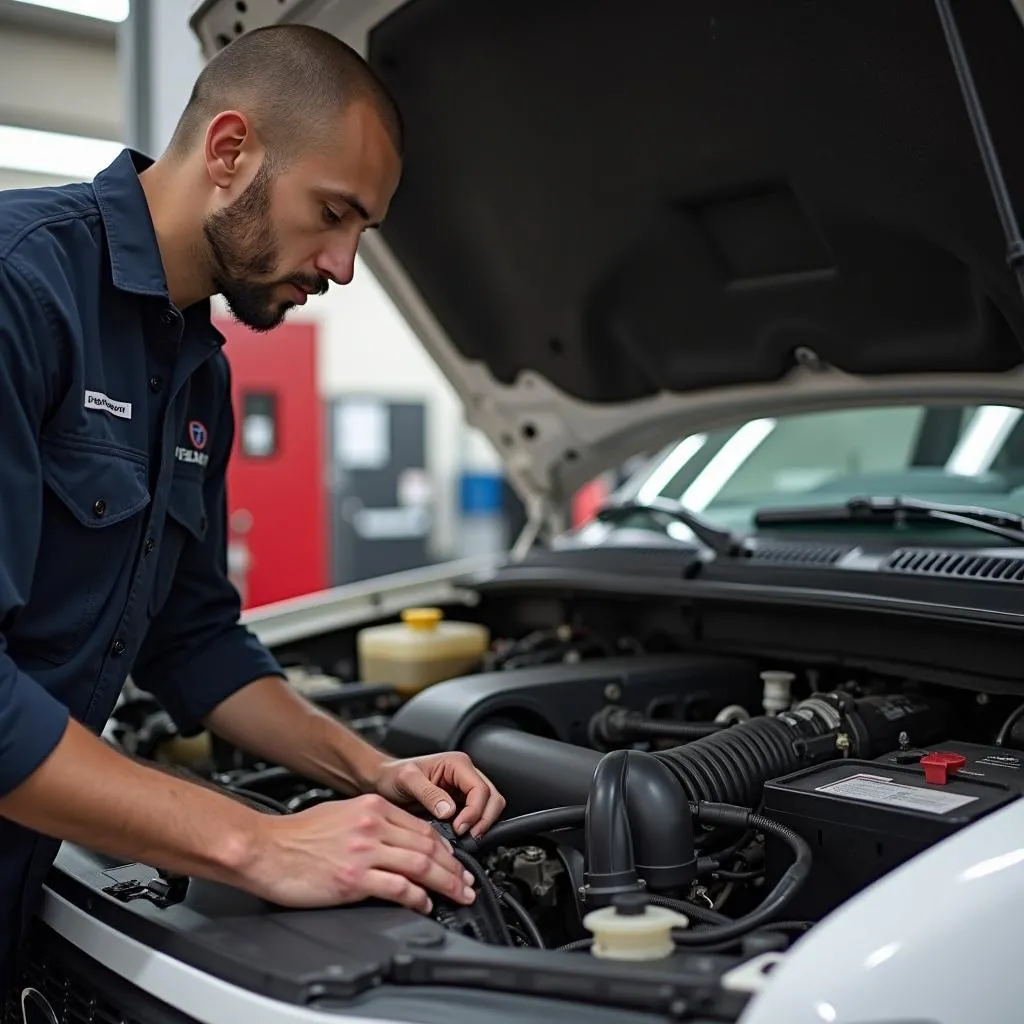Experiencing car troubles is never fun, especially when it involves your anti-theft system. A malfunctioning system can leave you stranded and frustrated. If you’re dealing with anti-theft issues on your 2000 Ford F150, this guide is here to help. While we won’t provide instructions on bypassing the system for obvious security reasons, we’ll equip you with the knowledge to diagnose the problem and explore potential solutions.
Understanding Your 2000 Ford F150 Anti-Theft System
Before diving into troubleshooting, it’s helpful to understand how your truck’s anti-theft system works. The 2000 F150 typically uses a Passive Anti-Theft System (PATS). This system relies on a transponder chip embedded in your ignition key. When you insert the key, the system reads the chip’s unique code. If the code matches, the engine is allowed to start.
Common Anti-Theft Issues and Symptoms
Here are some telltale signs that your anti-theft system might be acting up:
- Engine Cranks but Won’t Start: This is a classic symptom of an anti-theft issue. If the system doesn’t recognize your key, it will prevent the engine from starting.
- Rapid Flashing Security Light: A quickly blinking security light on your dashboard often signals a problem with the PATS system.
- “Theft” Light On: Some F150 models have a dedicated “Theft” light. If it stays illuminated, it’s another indication of an issue.
 Ford F150 dashboard with warning lights illuminated
Ford F150 dashboard with warning lights illuminated
Diagnosing the Problem
Pinpointing the exact cause of anti-theft issues usually requires diagnostic equipment. Here are a few steps you can take:
- Check Your Key: Start with the basics. Ensure your key isn’t damaged and the battery (if applicable) is strong. Try a spare key if you have one.
- Inspect the Ignition Cylinder: A worn or damaged ignition cylinder can prevent the PATS system from reading your key’s transponder chip properly.
- Visual Inspection: Check the wiring and connections around the ignition cylinder, steering column, and related modules for any signs of damage, loose connections, or corrosion.
Using Diagnostic Tools
For a more in-depth diagnosis, you’ll likely need an OBD-II scanner, ideally one capable of reading manufacturer-specific codes. Some advanced scanners, like those offered by Cardiagtech, can provide detailed information about your PATS system.
 Mechanic using OBD2 scanner on Ford F150
Mechanic using OBD2 scanner on Ford F150
Seeking Professional Help
While some anti-theft problems might have simple solutions, others require specialized knowledge and tools. If you’re uncomfortable working on your vehicle’s electrical system or your attempts to diagnose the issue haven’t been successful, it’s best to seek help from a qualified automotive electrician or your local Ford dealership.
FAQs about Ford F150 Anti-theft Systems
Q: Can I bypass the anti-theft system myself?
A: We strongly advise against attempting to bypass the system. Doing so could damage your vehicle, compromise its security, and even be illegal.
Q: How much does it cost to fix an anti-theft system problem?
A: Costs can vary greatly depending on the specific issue, labor rates, and part availability. It’s best to get a quote from a reputable mechanic or dealership.
Q: Can a bad battery cause anti-theft system issues?
A: While a weak battery is less likely to directly cause anti-theft problems on a 2000 F150, it can sometimes lead to erratic electrical behavior, potentially affecting the system.
Q: What are common causes of PATS system malfunctions?
A: Common culprits include faulty ignition cylinders, damaged keys, wiring issues, and problems with the PATS module itself.
Conclusion
Dealing with anti-theft system issues on your 2000 Ford F150 can be a real headache. While we can’t provide a step-by-step guide on bypassing the system, we hope this article has given you a better understanding of how it works, common problems, and where to seek help. Remember, professional diagnosis and repair are often the safest and most effective solutions.
 Mechanic inspecting Ford F150 engine
Mechanic inspecting Ford F150 engine
For reliable diagnostic tools and expert advice, consider CARDIAGTECH. We offer a range of products and resources to help you keep your vehicle running smoothly.
